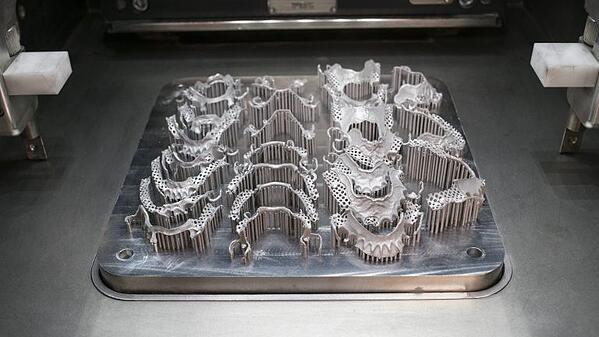BLOG
Generative Design and The Future of Mechanical Design
In traditional CAD software, there are only so many ideas for a design a mechanical engineer can come up with. Most of them are unimaginative, which can lead to over-built, heavy, and cumbersome final products. This is where generative design steps in.
What is Generative Design?
Generative design uses mathematical optimization, combined with finite element analysis to automatically create optimal part geometries. It uses an engineer’s constraints, including loads and fixed geometries as inputs, and creates hundreds of the lightest, strongest, and most intricate designs as an output. A single engineer simply could not conceive of these types of designs on their own. Not to mention this is all done with the click of a button.
Generative Design with Onshape
As a mechanical engineer here at Very, we have selected Onshape as our CAD software of choice. Onshape uses an application called ParaMatters to construct the generative designs you want to create in Onshape. Once the engineer has created the design, he/she will go into ParaMatters and select the object in question. One will then choose the loads, where they will be applied, and the geometries that are fixed and cannot be changed. After this, hundreds of generative designs will be produced for you to choose from.
One of the perks of Onshape is that it runs in the cloud instead of your local system. Creating these generative designs requires a significant amount of computing power, and with traditional CAD software, this would require a very expensive workstation or dedication on a premises server. With Onshape, you never have to rely on your own hardware to do all the hard work. ParaMatters leverages cloud computing to run it for you, all while you keep working on your project uninterrupted.
The Difficulty Manufacturing Generative Designs
Because of the complex nature these designs have, they have to be manufactured in a certain way. Additive manufacturing and investment casting are often the only two processes by which these designs can be made. Additive manufacturing is a term 3-D printing has received now that it has reached the level of industrial production technology. It consists of applying layer by layer of material until the entire design is produced.
Whether it be plastic, concrete, or metal, additive manufacturing is the foremost way these intricate designs are created. Although, this does not come without its drawbacks. Additive manufacturing can face speed of production challenges, resulting in a limit of mass production runs. It can also face repeatability problems as every print does not always go like the last.
For investment casting, it essentially consists of making a mold, pouring the metal into it, and then breaking it apart. The only primary disadvantage of this is the high cost during short production runs. This is the reason we mainly look to additive manufacturing for our generative designs.

Why is Generative Design the Future of Mechanical Design?
With this new technology, a thousand different solutions to a problem could be revealed to the engineer all within a few minutes. Not only are there many different designs to choose from that could not have been imagined otherwise by the engineer, but they are also lighter and stronger. So when is generative design a good idea? In many applications, the weight of the product is a top priority. Such as designing parts for the automotive, or aerospace engineering fields. Simply having lighter parts can result in tremendous amounts of money saved in fuel costs alone.
Generative design can give you the lightest product possible and still bear your loading conditions. All in all, this technology is moving into CAD software everywhere, as well as improving upon itself daily. In the near future, generative design will be as common as any other feature in CAD considering how much benefit it brings the user.
Designing a new product is a team sport. Speak to our team today to make sure your project gets started on the right foot.









